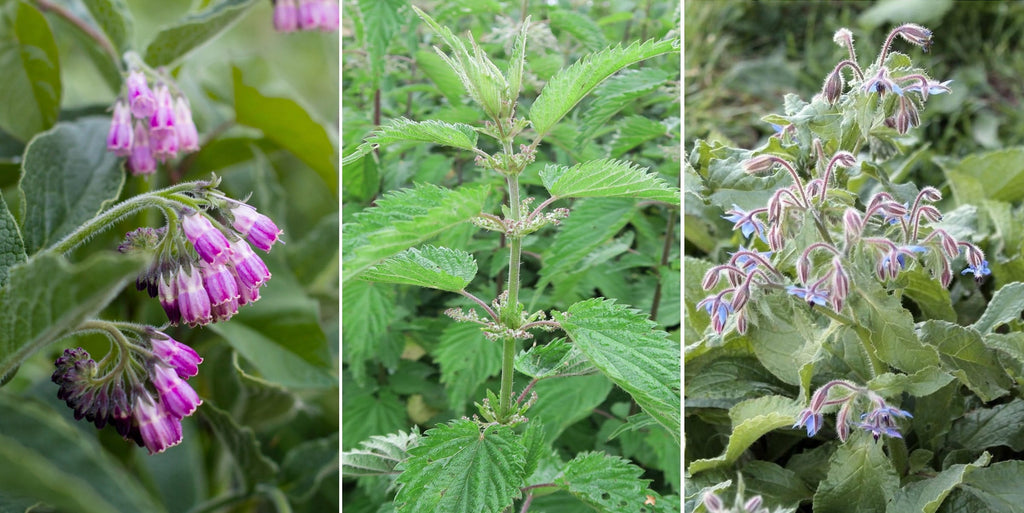Composting - A Simple Recipe for Compost Tea from Three Plants
Posted by JOHN DAVIS

**Composting: A Simple Recipe for Compost Tea Using Comfrey, Borage, and Stinging Nettle**
Composting is an essential practice for any gardener looking to enrich their soil naturally. One of the most potent tools in organic gardening is compost tea—a nutrient-rich liquid that acts as a powerful fertilizer. Creating compost tea from specific plants can offer a variety of benefits for your garden. In this guide, we’ll explore a simple recipe using comfrey, borage, and stinging nettle—three plants known for their remarkable ability to enrich soil and promote plant growth.
Why Comfrey, Borage, and Stinging Nettle?
- **Comfrey**: Known as a "dynamic accumulator," comfrey has deep roots that pull nutrients like potassium, phosphorus, and calcium from the soil. These nutrients become concentrated in the leaves, making comfrey an excellent plant for compost tea.
- **Borage**: Borage is rich in potassium and calcium, essential nutrients for plant development. It also has a unique ability to attract pollinators, which benefits the overall health of your garden.
- **Stinging Nettle**: Nettle is a powerhouse of nitrogen, a critical component for leafy growth. It also contains iron, magnesium, and trace minerals that support the healthy functioning of your garden ecosystem.
The Recipe
Creating compost tea from these three plants is straightforward. Here’s a simple method:
Ingredients:
- A handful each of comfrey, borage, and stinging nettle leaves.
- A 5-gallon bucket.
- Water (preferably rainwater or non-chlorinated).
Instructions:
1. **Harvest**: Collect fresh leaves from comfrey, borage, and stinging nettle. Be sure to wear gloves when handling stinging nettle to avoid irritation.
2. **Chop and Fill**: Roughly chop the leaves to help release their nutrients. Place them into the 5-gallon bucket, filling it about halfway.
3. **Add Water**: Fill the bucket with water, covering the plant material completely. Stir the mixture to ensure the leaves are fully submerged.
4. **Steep**: Cover the bucket loosely to allow airflow and let the mixture steep for 2-4 weeks. Stir occasionally to speed up the decomposition process.
5. **Strain and Dilute**: After steeping, strain the liquid to remove the solid plant material. Dilute the compost tea with water at a ratio of 1:10 (one part tea to ten parts water) before applying it to your garden.
Application
Compost tea can be applied directly to the soil around plants or used as a foliar spray. It’s best to apply the tea in the early morning or late afternoon to avoid scorching the leaves in direct sunlight. This homemade brew will not only nourish your plants but also improve soil structure and microbial activity.
Benefits
Regular use of this compost tea can lead to healthier, more resilient plants. The balanced mix of nutrients from comfrey, borage, and stinging nettle provides everything your garden needs to thrive naturally, reducing the need for chemical fertilizers and supporting sustainable gardening practices.
Incorporating compost tea into your gardening routine is an excellent way to recycle plant material and harness the natural goodness of your garden. Give this simple recipe a try, and watch your garden flourish!
